
Duende Art Projects is happy to introduce you to two key works by the Congolese artist Aimé Mpane. Informed collectors might recognize them, as they were on view at the artist’s solo exhibition at the Royal Museum of Fine Arts in Brussels last year, and were also shown at the Rietberg Museum in Zürich in 2019.
Aimé Mpane (b. 1968, D.R. Congo) is one of the most prominent Congolese artists of his generation. As a sculptor he has developed a very personal style in which sculpted volumes and painted surfaces constantly interact. Working primarily with wood and an adze - a traditional African woodworking tool – the Belgium-based artist creates sculptures, mosaic-like wall hangings, and portraits carved on wood that explore his personal and artistic experiences in Congo and Belgium’s post-colonial worlds. His practice is inspired by contemporary Congo, while demonstrating a deep understanding of its history.
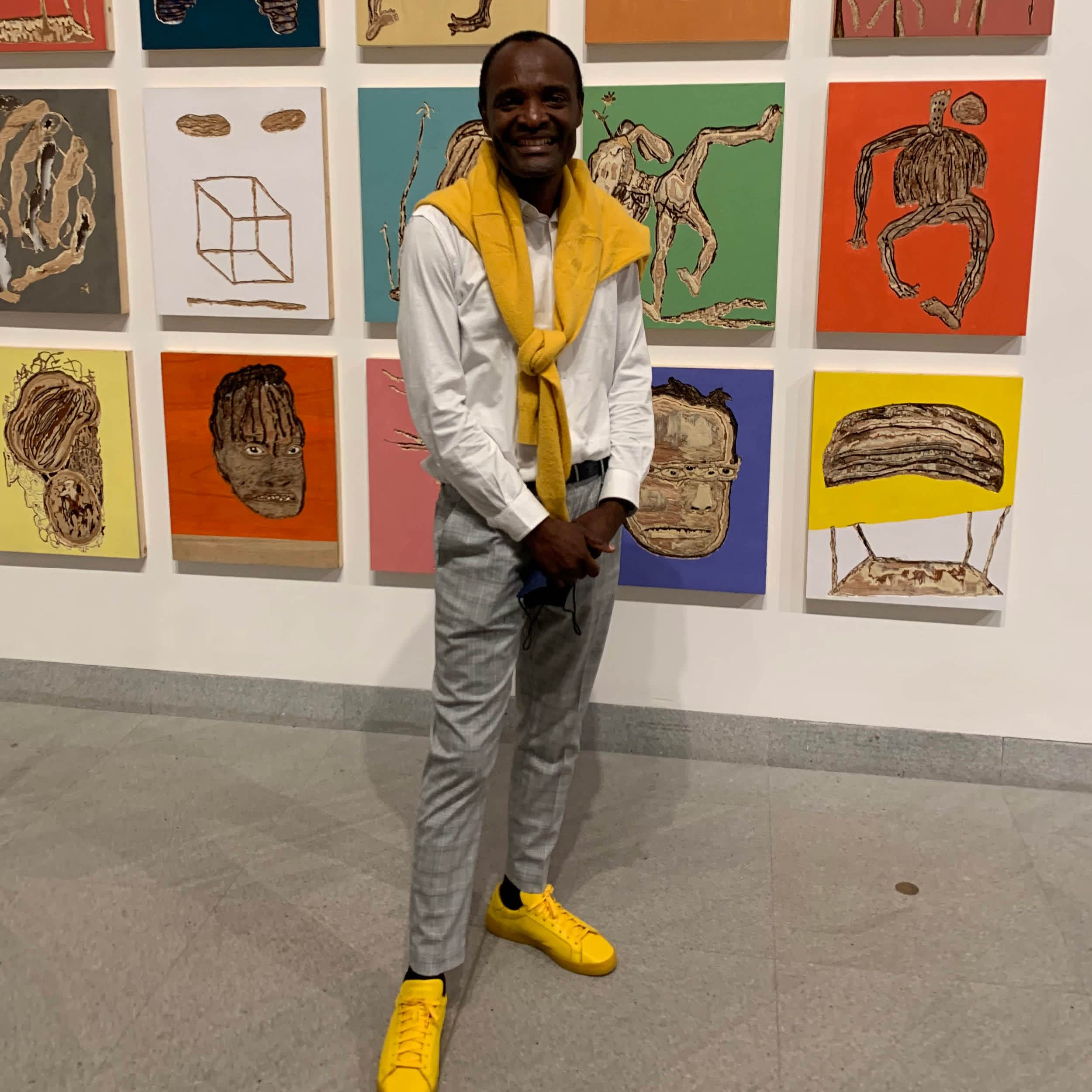
Portrait of the artist at his solo exhibition at the Royal Museum of Fine Arts, Brussels, 2021.
Mpane’s sculptures and installations often address the aftermath of Belgian colonialism; while his rough-hewn, brightly painted portraits on wood panels of the people he meets on the streets of Kinshasa give insight into modern Congolese identity. UNSETTLED presents two works from his series “Le Demoiselle Pende/Masque Bi-face”. These carved sculptures resemble African sickness masks while also referencing Pablo Picasso’s 1907 masterpiece “Les Demoisselles d’Avignon”. This body of work was inspired by a visit of the artist to his grandmother in a village situated some 800 kilometers from Kinshasa. As a lot of diamonds are mined around Tshikapa City, in the Kasai Province, the area is rife with trafficking; a context that fosters the spread of prostitution.
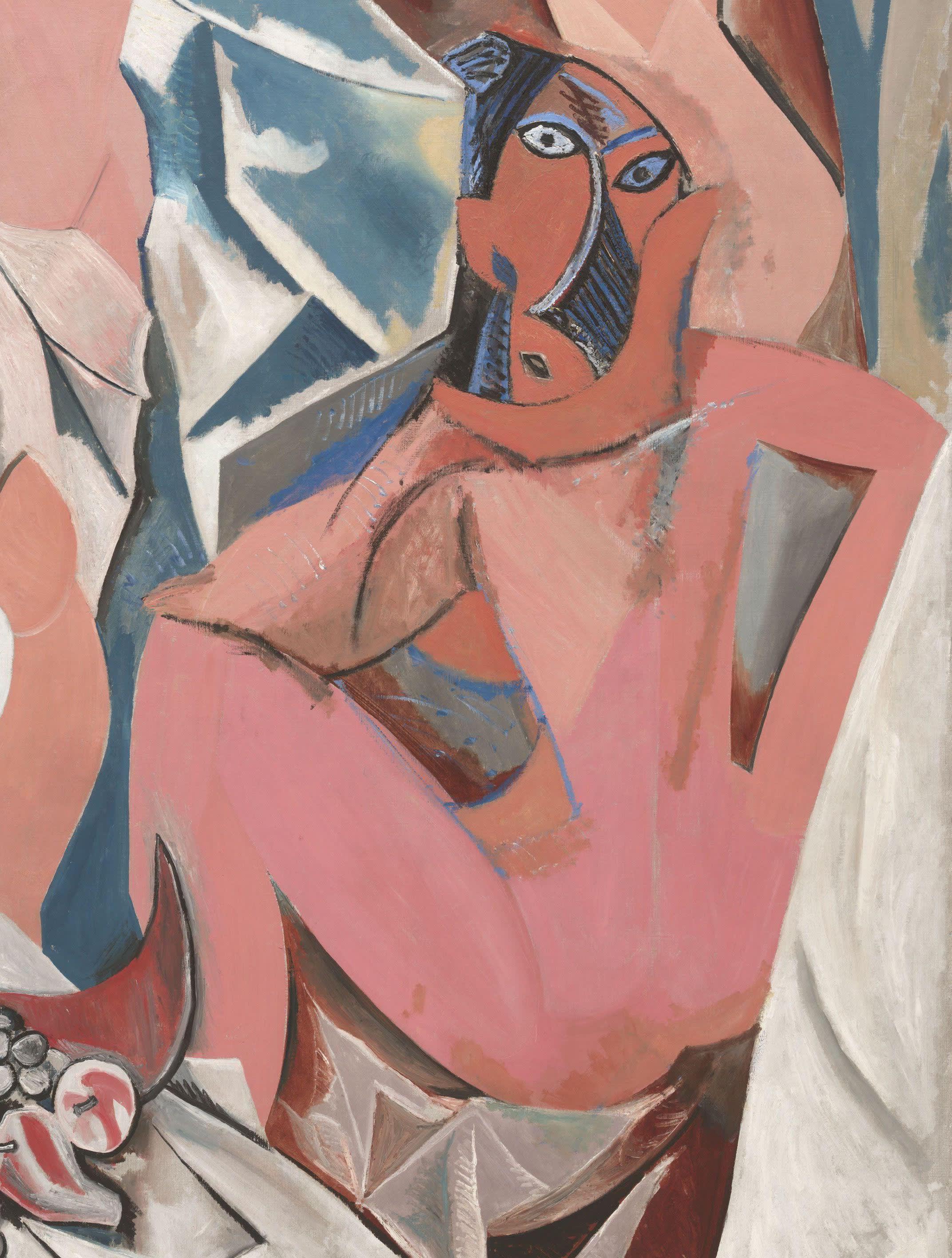
Detail of 'Les Demoiselles d'Avignon' by Pablo Picasso (1907).
“It was night-time, and I could see clients walking up to prostitutes and using the light of their mobile phones to assess them, as though they were mere objects. Interestingly, these young girls were mainly from the Pende tribe – the same tribe that produced the sculptures that inspired Picasso to create Les Demoiselles d’Avignon, a picture depicting prostitutes. This is therefore a juxtaposition of the image produced by Picasso and of these Pende women reduced to mere objects. This cultural and political dimension fascinates me.”
This series is also imbued with a second symbolic layer:
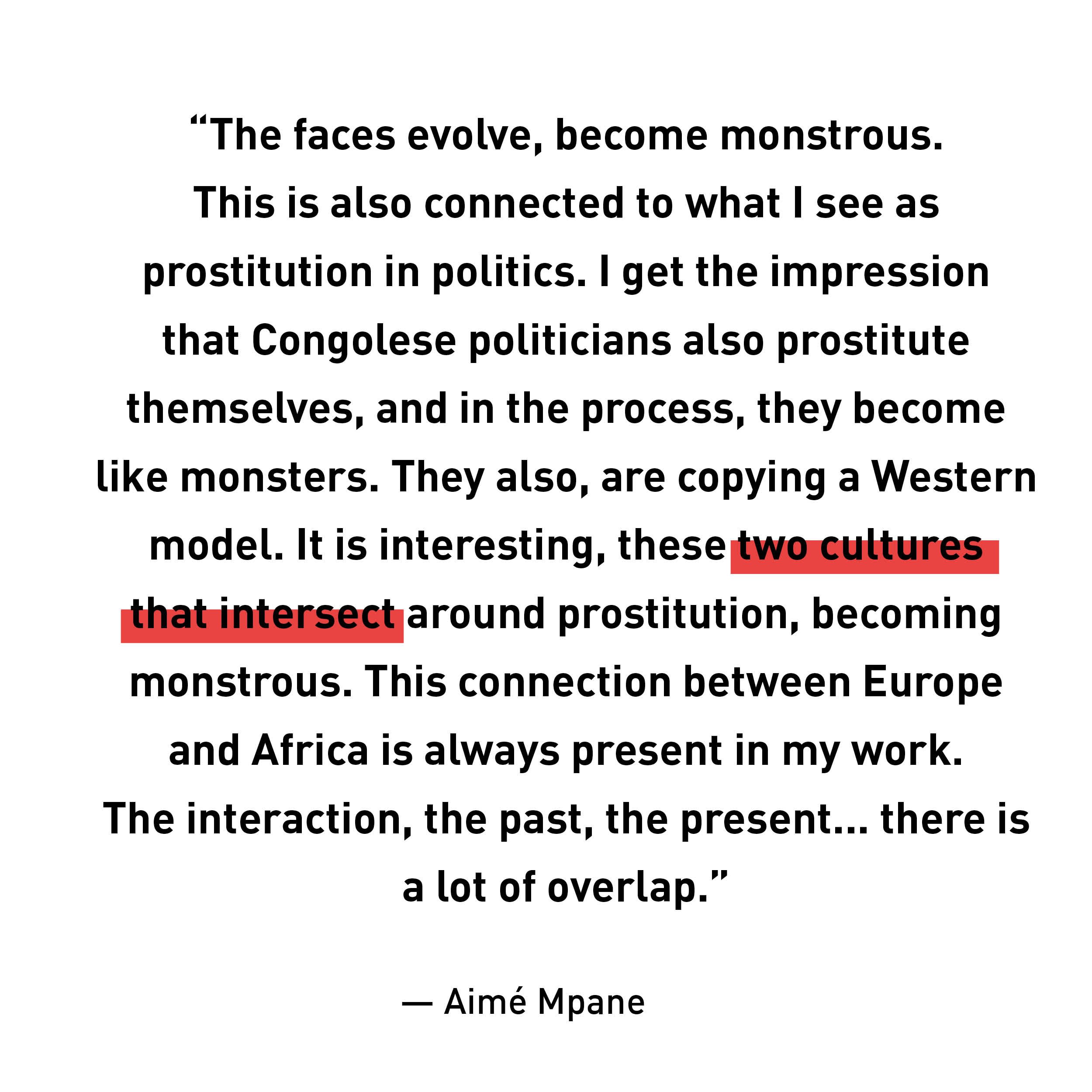
The son of a sculptor, Mpane was brought up in the tradition of carpentry and has a close affinity with wood and its craftsmanship. Mpané’s sculpts these deformed faces out of multiple layers of plywood. The backside of each segment is painted in a different color, resembling topographical maps and evoking the strata of memory. The choice for plywood as a material, whose three thin sheets are glued together against the grain, is no coincidence. The material inspires him on several levels. While being a product of the Western consumption industry, its three superimposed layers also recall the three strata of the skin (epidermis, dermis, hypodermis), which the artist cuts away to expose and reveal our deeper, invisible layers. By hacking away the plywood, he exposes the constructed nature of the material as well as the constructs of race and identity. When the artist cuts away the multiplex, the various colors of wood (light brown, white and dark brown wood) evoke the human skin. The multiplex also refers to the precarious structures of the poorest areas of African cities. Yet, through his artworks, this ‘poor’ medium acquires an aura of dignity and longevity.
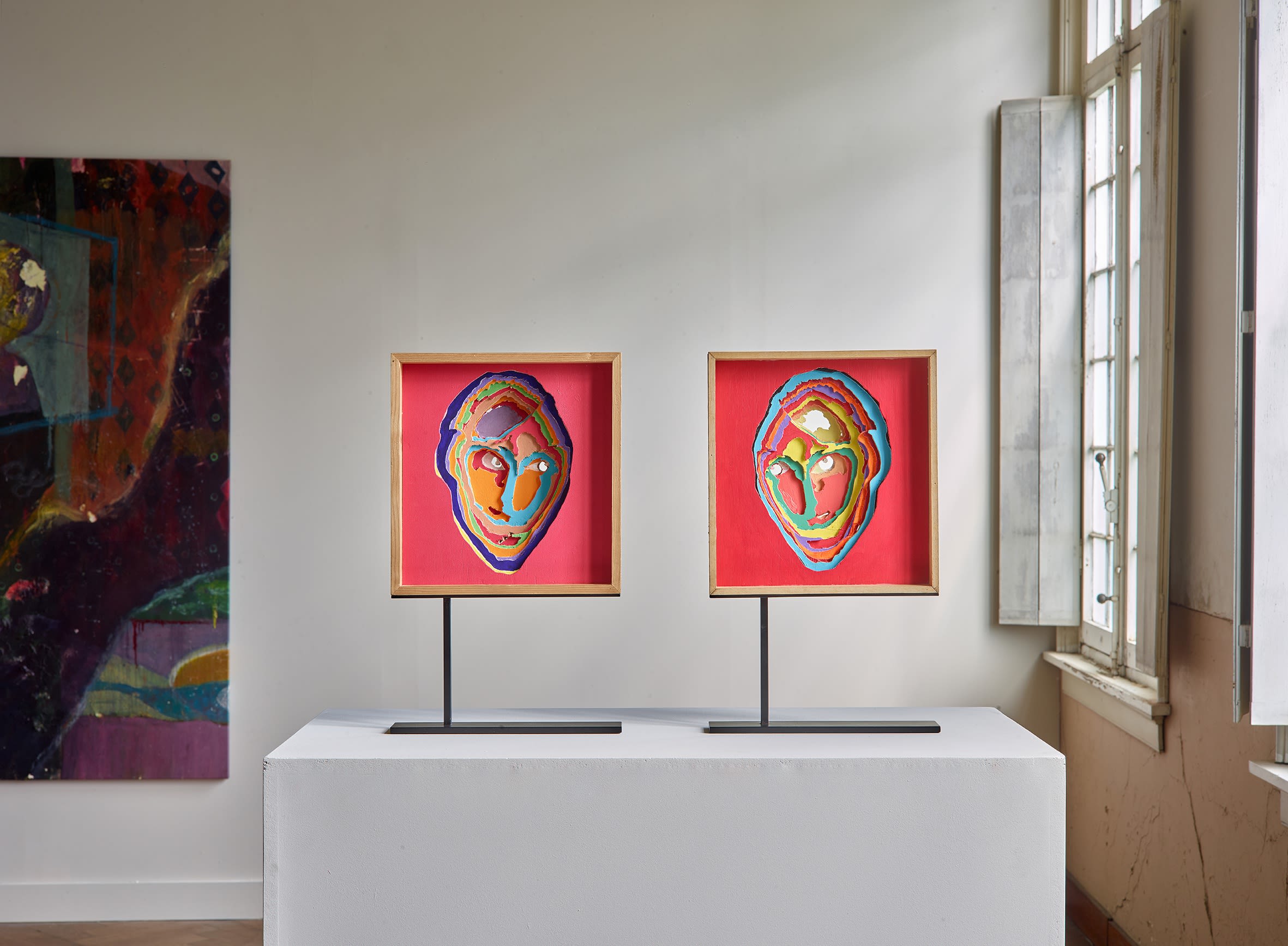
Installation view UNSETTLED.
Essential to this biface works is their double-sided nature, with a hollow inside and a protruding relief on the outside, as though memories were getting lost and reappearing on the surface. The artist takes us ‘through the looking glass’ to the other side, behind the mask. For the back of the work, Mpane was inspired by an early self-portrait by Picasso, as a nod to Western culture and art history. His adze-cut, multicolored works possess an intuitive sense of the burden of humanity and the janus-like nature of our souls. Janus, the Roman god of passages, transition and transformation was a double-faced divinity, turned with one side to the past while facing the future with the other. While one side of the work is sculpted with the traditional adze, the layers on the other side breathe with modernity, being laser-cut. Essentially, this series deals with the problem of lines of demarcation, of borders between cultures. A true humanist and cosmopolite, Mpane proposes a global vision of art.

Two-Sided Mask, Lady Picasso - Menso, Aimé Mpane (2018). Image courtesy of Nomad Gallery. Photo by Vincent Everarts.
Born in Kinshasa, today the artist divides his life between the Democratic Republic of Congo and Belgium, where he lives in Brussels. Mpane recently was honoured with a solo exhibition, “Remedies”, curated by Sophie Hasaerts, at the Royal Museums of Fine Arts of Belgium in Brussels. He has been the subject of several other solo shows in both Congo, and the United States and was included in significant group exhibitions including “Posing Modernity: The Black Model from Manet and Matisse to Today” at Wallach Art Gallery, Columbia University, New York, NY (2019); “Black Models: From Gericault to Matisse” at the Musée de Orsay, Paris, France (2019); “Sanctuary”, FOR-SITE Foundation, San Francisco, CA (2017) and Aga Khan Museum of Art, Toronto, Canada (2020); “Double Take: African Innovations”, Brooklyn Museum, NY (2016); and “Shaping Power: Luba Masterworks from the Royal Museum for Central Africa”, Los Angeles County Museum of Art, CA (2013). In 2018, Mpane was commissioned to create a sculpture for permanent display at the newly renovated Africa Museum in Tervuren, Belgium. His work is additionally collected by institutions including the National Museum of African Art, Washington, D.C; Brooklyn Museum, NY; Harlem Museum, NY; Detroit Institute of Art, MI; Microsoft Art Collection, Redmond, WA; Phillips Collection, Washington, D.C; and the Embassy of Belgium, Kinshasa, Democratic Republic of Congo. Aimé Mpane is represented by Walter de Weerdt’s Nomad Gallery.
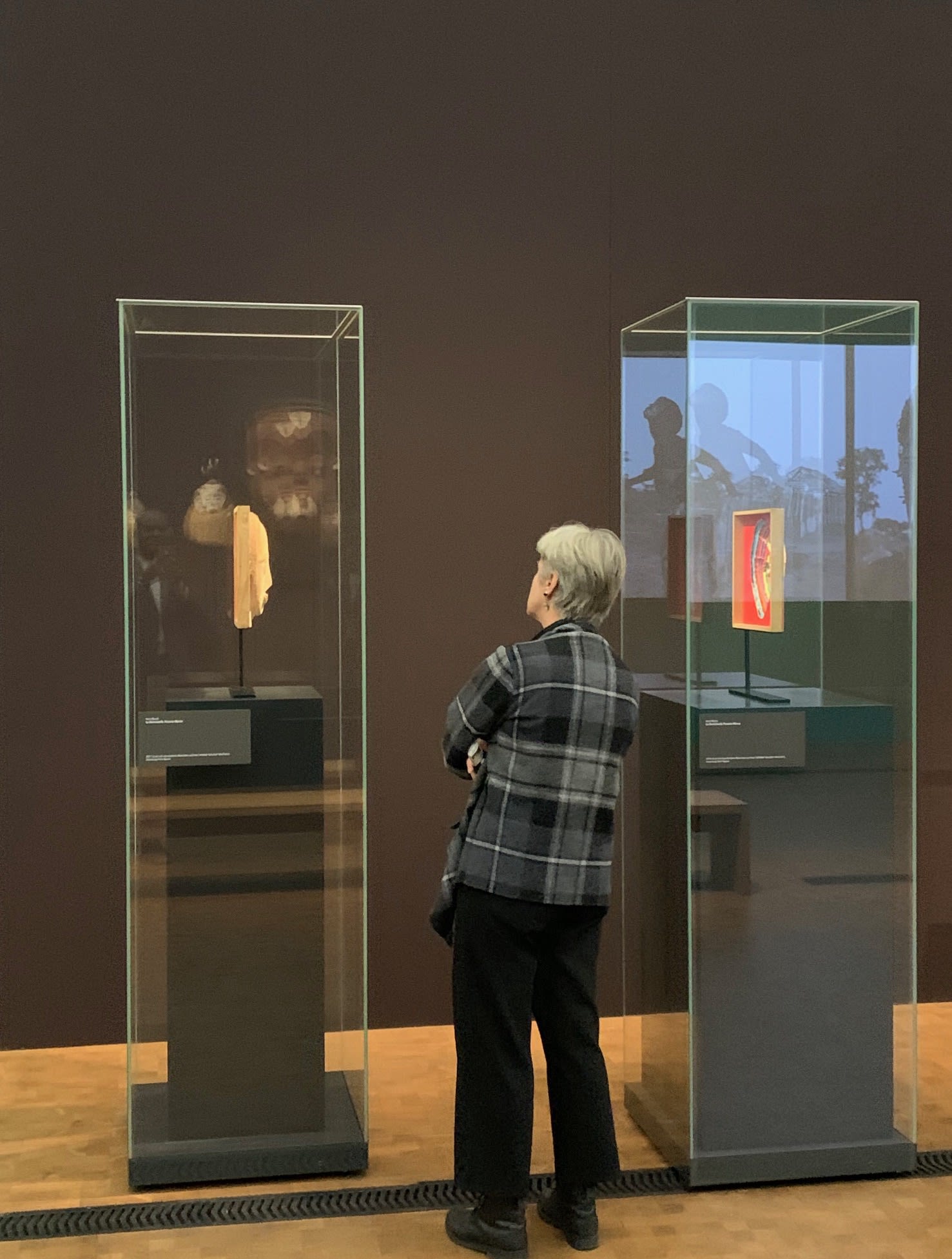
Installation view “Congo As Fiction – Art Worlds Between Past and Present”, Museum Rietberg, Zürich, 2 November 2019 – 15 March 2020.
